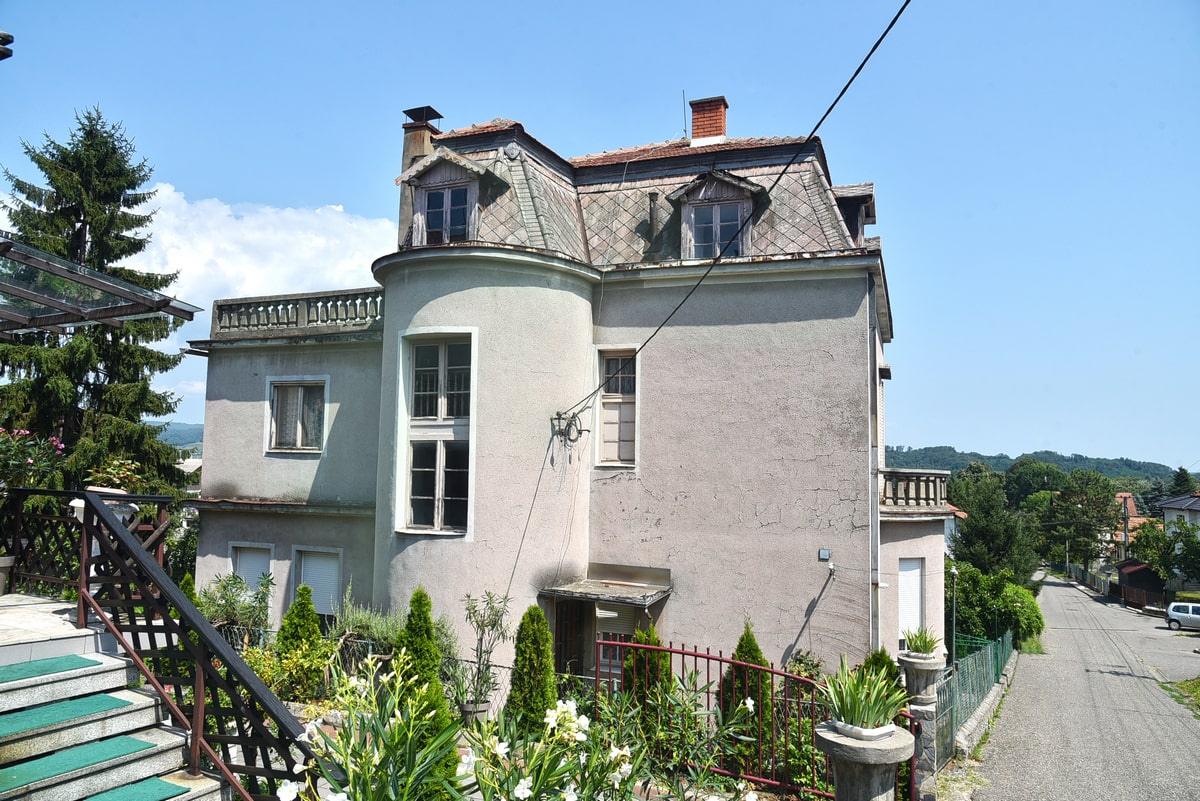Castles of Serbia
Villa Sunčica
Banja Koviljača
Villa Sunčica also used to have letters on the facade, in Cyrillic art-deco font, but they were lost in the renovations after the war. And historically speaking, according to the “Design for the new villa Sunčica in Koviljača by Mr. Milosav Stekić, a merchant from Belgrade” from February 1931, the architect was a certain B.Sc. eng. Žarko M. Pajović from Belgrade.
In the case of the villa, it is noticeable that it was post-academically designed, and that it united the influences from before the Great War, and those more modern ones, which are manifested in the protruding semicircular staircase, typical of Art Deco. The relief plastic has been carefully selected and applied to the facade, with a measure and to give a feeling of elegant massiveness. The villa consists of a basement, ground floor, first floor and attic that expresses the shapes we find in Paris, which date from the second half of the 19th century. The basement and the cellar have a stone facade, which imitates the typical shape of Serbian houses in this area. The fence and the staircase are made of concrete, but they are in a dilapidated condition.

However, in 1972, the basic idea was defiled, because the design of Ljubica Jarčev, an architect from the construction and craft company “Obnova”, involved upgrading a villa, closing the entire terrace and building a new terrace on higher floor height, and now the terrace is being approached from the attic. Thus, the internal organization of the space was changed, so two separate apartments from the family villa were created. This brings problems during the reconstruction, because the owner of the first-floor apartment lives abroad and is not interested in selling or renovating, and the owners of the lower apartment are ready to buy the upper apartment as well. It is noticeable that before the protection was provided, an ugly plastic canopy was installed above the front door.
The villa needs a partial reconstruction. It is not open to visitors.
This project was supported by the Ministry of Culture and Information of the Republic of Serbia.





